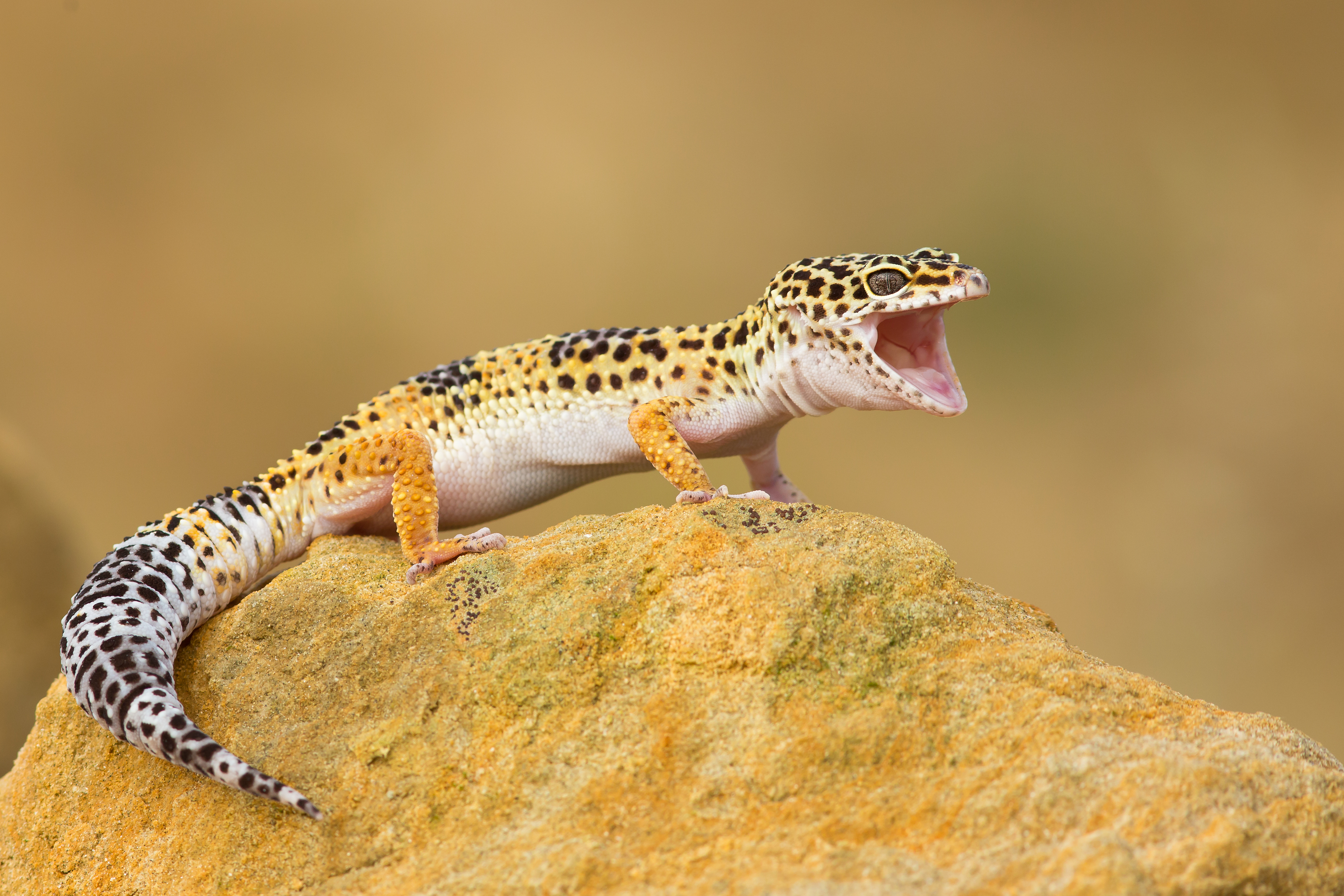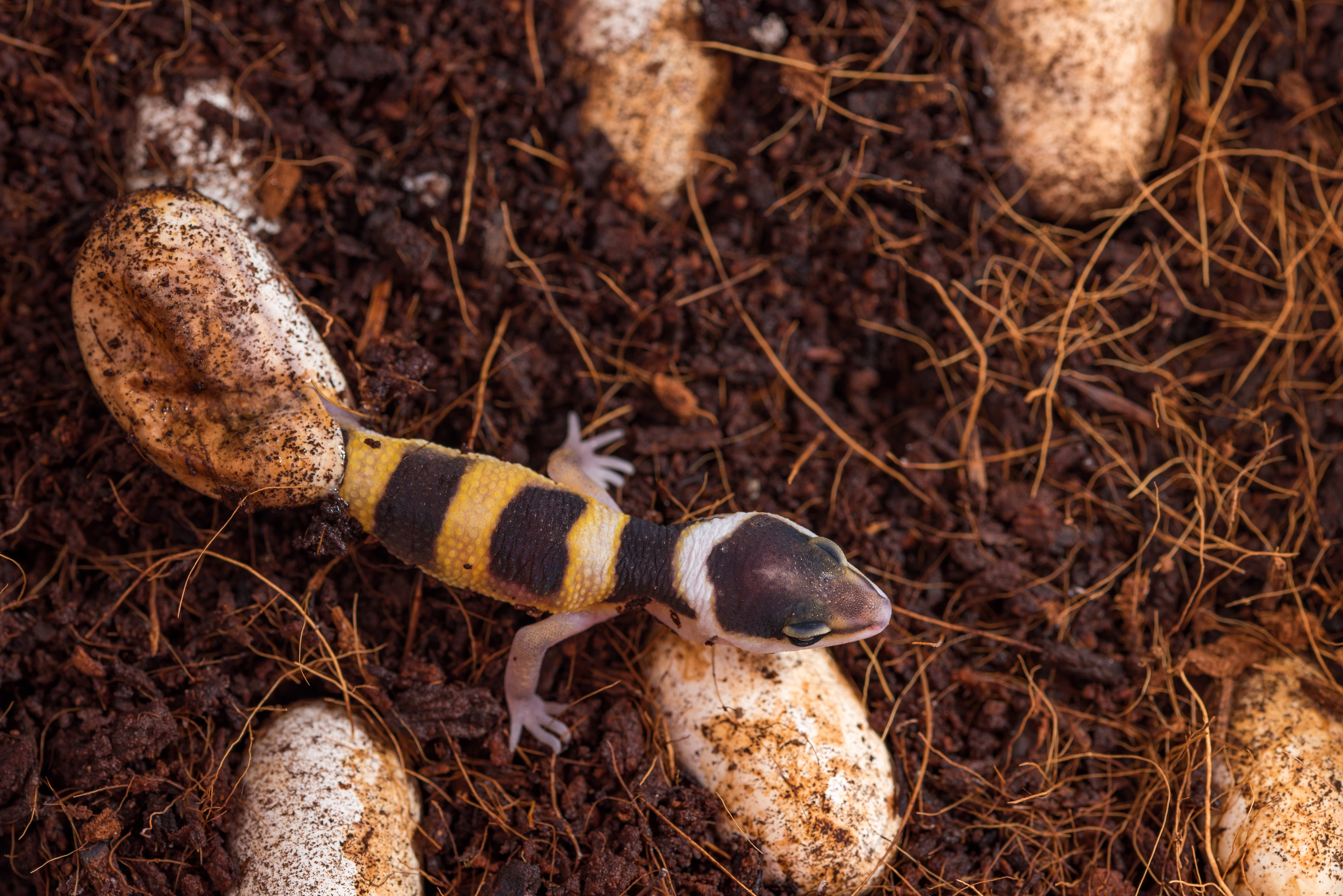Leopard gecko is a South Asian lizard with a narrow, spotted body. The name refers to the gecko’s black spots, which resemble those of a leopard. It is mostly used to refer to the common leopard gecko, species Eublepharis macularius. It may sometimes be used for other species in the genus Eublepharis. Leopard geckos are popular pets.


Geckos have short, flat bodies covered with small, bumpy scales. Leopard geckos grow 7 to 10 inches (18 to 25 centimeters) long, including the tail. Their eyelids are movable, unlike those of some other geckos, and their pupils are slit-shaped. They have clawed toes instead of the toe pads of other geckos. The claws help with climbing rocks and branches. Leopard geckos’ bodies are white with black, brown, purple, and yellow markings.
Leopard geckos live in the deserts and dry grasslands of Afghanistan, India, Iran, Iraq, and Pakistan. They are nocturnal, which means they are active at night. Leopard geckos shelter among rocks and in burrows during the day. Geckos in the wild feed chiefly on beetles, centipedes, scorpions, and spiders. Those in captivity are fed mainly crickets, grasshoppers, locusts, mealworms, waxworms, and baby mice.
Leopard geckos have segmented tails, enabling them to lose their tails and regrow them. If a gecko is attacked by a predator, it can distract the attacker by waving the tail. When the predator attacks the tail, the tail breaks off but keeps wriggling. While the predator holds the tail, the gecko runs away. It soon grows a new tail.
Female leopard geckos lay eggs. The temperature at which the eggs are kept before they hatch determines the sex of the offspring. Females lay about two eggs in a shallow nest they dig in the ground. A female may lay up to six clutches of eggs per year. Leopard geckos may live for 10 to 20 years in captivity. They live up to 15 years in the wild.
